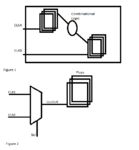mr_vasanth
Member level 5

- Joined
- Mar 12, 2007
- Messages
- 86
- Helped
- 5
- Reputation
- 10
- Reaction score
- 7
- Trophy points
- 1,288
- Location
- Bangalore, India, India
- Activity points
- 1,906
Design compiler and Primetime provides an option to set two clock groups as logically exclusive or physically exclusive as follows.
set_clock_groups -physically_exclusive/-logically_exclusive
What are the scenarios under which we should set two clock groups as physically exclusive or logically exclusive?
set_clock_groups -physically_exclusive/-logically_exclusive
What are the scenarios under which we should set two clock groups as physically exclusive or logically exclusive?




